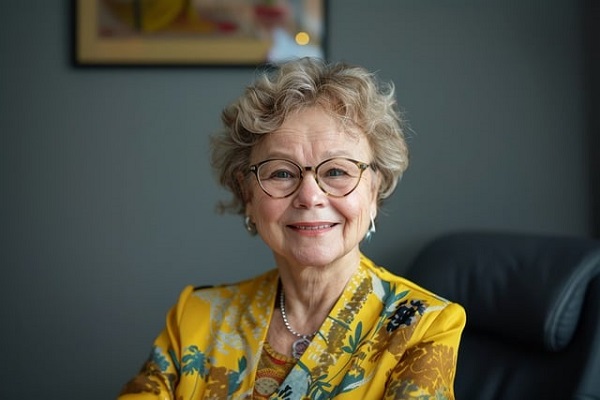Scientists and doctors alike will tell you that there is no real cure for AMD [age-related macular degeneration], an eye disease that can blur your central vision.
Muriel Ganz knew nothing about medicine, but she can now tell you that while there’s no definitive cure for AMD, there’s at least a way to slow it down.
A seventy-five-year-old widow, Muriel was a popular debutante and Southern belle who had once ruled the state of Georgia as Magnolia Queen a record three years in a row. Blonde and brainy, Muriel enjoyed her hometown fame but was far more concerned with photography. Forced to study it as a high school elective, she became smitten with the art, clutching a box camera wherever she went. This love affair developed into a lifelong career.
Muriel was one of the few successful female photojournalists of her time, and the evidence of her talent was framed on the walls of her cozy home in Connecticut. But over time, as Muriel married, raised children, survived the death of her husband, and grew increasingly fragile, picture-taking became less an active pursuit than a fond memory. Now, she was content to stitch needlepoint and play with her grandchildren. Still, because vision — both physical and mental — had been the fuel for her artistic passion, Muriel was perhaps more anxious than most when she noticed one day that her sight was not what it used to be.
Muriel’s complaints of blurry vision led to a diagnosis of macular degeneration. She refused to accept the diagnosis, or the doctor’s grim prognosis. Muriel made an appointment at my office to see if any other course of treatment would be helpful. Ophthalmologists use an Amsler grid, an effective way to check for AMD. The grid is black with horizontal and vertical white lines across it, like graph paper. To test for AMD, you close one eye and stare at the grid with the other. The lines on the paper are continuous, but if they appear wavy, then there’s a good chance that you have macular degeneration. Another hallmark of the disease is having holes in your vision; if pieces of the grid are missing when you look at it, AMD might be causing it.
Sure enough, Muriel saw three lines on the grid as wavy where they should have been straight, which convinced me that she did have AMD. However, since Muriel still viewed the entire grid intact, I knew that her condition was not terribly advanced. While Muriel was facing other major age-related problems, such as osteoporosis and elevated cholesterol, her biggest worry was the loss of her sight.
In order to halt the free radical damage to her macula and prevent further degeneration, I prescribed her supplements of B vitamins, taurine, and essential fatty acids. The crux of her anti-AMD programme, however, was a daily dose of both lutein and zeaxanthin. Eager to restore her sight, Muriel consented to my provision regimen. Initially, however, she was extremely upset because the treatment didn’t seem to be working.
When it comes to an area as complex as the eye, I told her, healing takes time; we couldn’t expect to undo years of damage in a few days. Worried, but knowing she had little other recourse, she continued to submit to treatment. One day, while walking up the stairs of her home, gazing at the black-and-white photos hanging there and lamenting the loss of her sight, Muriel realized that the pictures looked sharper than they had in years. She went to her eye doctor to confirm that her vision was truly improving after months of natural treatment.
“You aren’t just seeing things,” he told her, amazed. “There’s a definite improvement in your vision. Whatever you’ve been doing, keep doing it.” What she’d been doing, of course, was taking lutein and zeaxanthin to shield her eyes from harmful light rays. Not only did the carotenoids seem to protect her from further macular damage, they appeared to reverse degeneration. That finding was remarkable enough, but two months later, Muriel noticed even further improvement. Details of objects popped out like never before; edges were more defined than ever. Inspired by her renewed sight and the almost forgotten clarity of life around her, Muriel dusted off her camera and set out to capture her new vision on film once more.
The conventional wisdom is that macular degeneration is irreversible, but Muriel’s case shows that this simply is not true. With the aid of lutein and zeaxanthin, the body can help heal and even reverse age-related vision loss.

